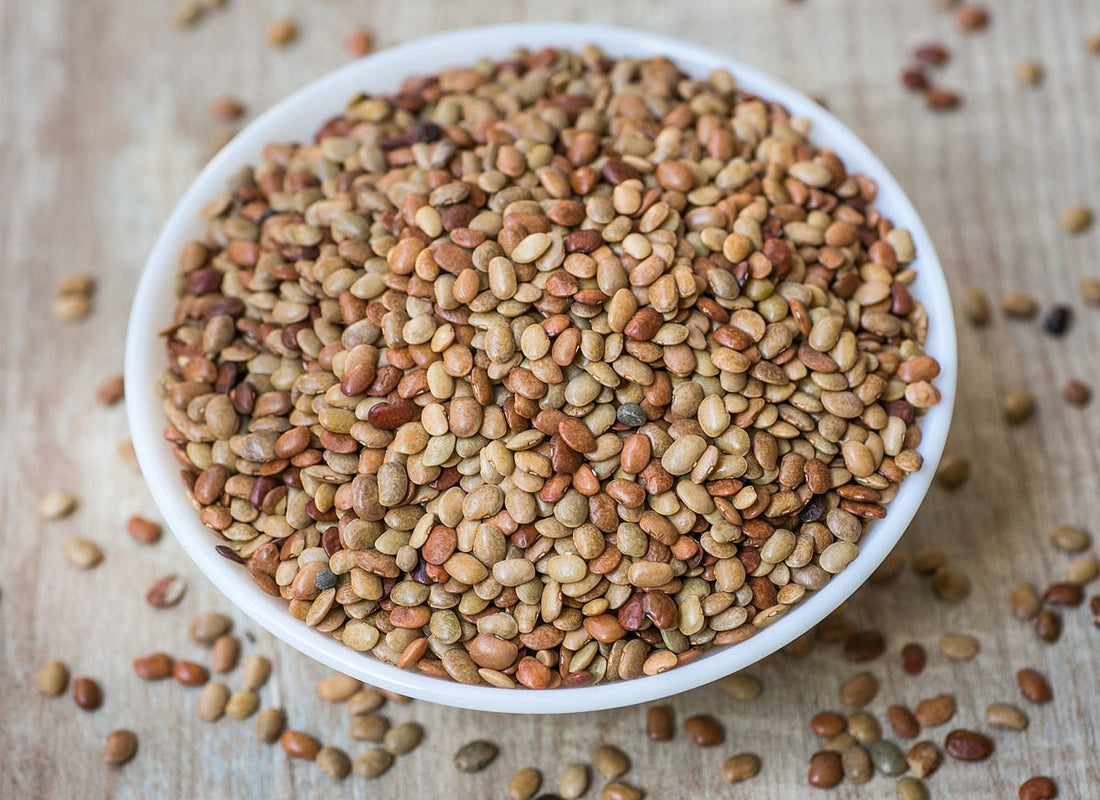
Disease Management in Horse Gram
Introduction
Horse gram (Macrotyloma uniflorum) is a versatile legume known for its drought-resistant properties and nutritional benefits. However, like any crop, it is susceptible to various diseases that can significantly affect yield and quality. Effective disease management is crucial to ensure healthy growth and optimal production. This blog will explore common diseases affecting horse gram and strategies for managing them.

Common Diseases in Horse Gram
Powdery Mildew (Erysiphe polygoni)
Symptoms:
White, powdery fungal growth on leaves, stems, and pods.

Management:
Cultural Practices: Ensure proper spacing for adequate air circulation. Avoid overhead irrigation.
Chemical Control: Use sulfur-based fungicides or systemic fungicides like triadimefon.

Leaf Spot (Cercospora spp.)
Symptoms:
Circular to irregular brown spots on leaves which may coalesce to form larger lesions.

Management:
Cultural Practices: Remove and destroy infected plant debris. Rotate crops to break the disease cycle.
Chemical Control: Apply fungicides like mancozeb or chlorothalonil.

Rust (Uromyces spp.)
Symptoms:
Orange to brown pustules on leaves, which later turn black.

Management:
Cultural Practices: Plant resistant varieties. Avoid overhead irrigation.
Chemical Control: Apply fungicides such as azoxystrobin or myclobutanil.

Anthracnose (Colletotrichum spp.)
Symptoms:
Dark, sunken lesions on stems, leaves, and pods.

Management:
Cultural Practices: Use disease-free seeds and practice crop rotation.
Chemical Control: Use fungicides like carbendazim or copper-based fungicides.

Root Rot (Rhizoctonia solani)
Symptoms:
Wilting and yellowing of plants, black or brown lesions on roots.

Management:
Cultural Practices: Ensure well-drained soils and avoid waterlogging.
Chemical Control: Treat seeds with fungicides like thiram or captan.

Integrated Disease Management (IDM) Strategies
Cultural Practices:
Practice crop rotation with non-leguminous crops to reduce pathogen load.
Use resistant or tolerant varieties whenever available.
Implement proper irrigation practices to avoid water stress and reduce humidity around plants.
Biological Control:
Employ biocontrol agents such as Trichoderma spp. to suppress soil-borne pathogens.

Use neem-based products for managing fungal diseases.
Chemical Control:
Apply fungicides judiciously, following recommended doses and timings to avoid resistance buildup.
Regularly monitor the crop for early detection and management of diseases.
Sanitation:
Remove and destroy infected plant debris to prevent the spread of pathogens.
Clean tools and equipment to minimize the risk of disease transmission.
Conclusion
Effective disease management in horse gram is essential for maintaining crop health and maximizing yield. By understanding the common diseases that affect horse gram and implementing integrated disease management (IDM) strategies, farmers can significantly reduce the impact of these diseases. Cultural practices like crop rotation and proper irrigation, combined with the judicious use of chemical and biological controls, form the cornerstone of a robust disease management plan. Regular monitoring and sanitation practices further help in early detection and prevention of disease spread. Through these comprehensive measures, farmers can ensure the sustainable cultivation of horse gram, thereby contributing to food security and economic stability.
FAQs about Disease Management in Horse Gram
What are the common diseases that affect horse gram?
Horse gram is commonly affected by powdery mildew, leaf spot, rust, anthracnose, and root rot.
How can I prevent powdery mildew in horse gram?
Ensure proper spacing for good air circulation, avoid overhead irrigation, and apply sulfur-based or systemic fungicides.
What should I do if I notice leaf spots on my horse gram plants?
Remove and destroy infected leaves, practice crop rotation, and apply fungicides like mancozeb or
